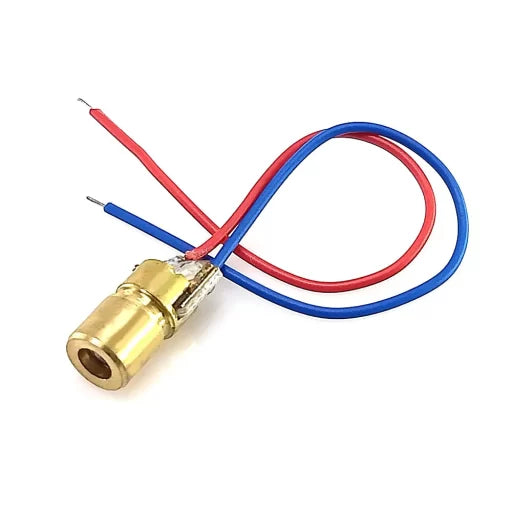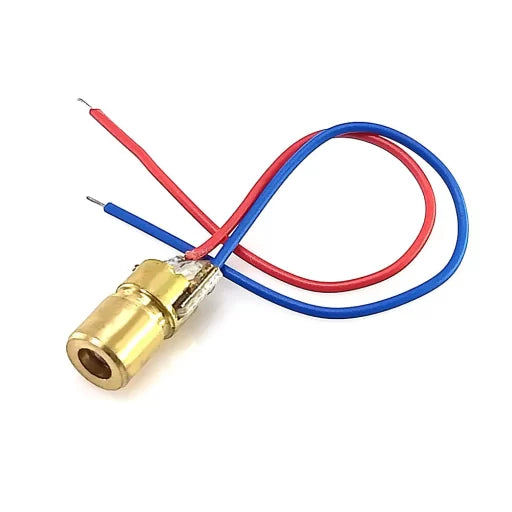Harish Projects
Laser Diode or Laser Light
Laser Diode or Laser Light
Couldn't load pickup availability
Share
Specification
- Voltage: 1.5V to 3.7V
- Light Color: Red
- Wire: GND & VCC/5V DC
Description
A laser diode is a semiconductor device that emits coherent light when an electric current is passed through it. Here are some technical specifications of a typical laser diode:
1. Wavelength: Laser diodes emit light at a specific wavelength, which is determined by the materials used in the device. Common wavelengths for laser diodes include 405 nm (blue-violet), 532 nm (green), 635 nm (red), and 780 nm (infrared).
2. Output power: Laser diodes can generate output powers ranging from a few milliwatts to several watts, depending on their size and design.
3. Operating voltage: The operating voltage of a laser diode depends on its design and the materials used. Typical operating voltages range from 1.5 to 3 volts.
4. Operating current: Laser diodes require a specific operating current to emit light. The current required depends on the device’s design and output power, but typical currents range from a few milliamperes to several amperes.
5. Beam divergence: Laser diodes emit light in a narrow, directional beam. The angle of divergence of the beam depends on the device’s design and can range from a few degrees to several tens of degrees.
6. Lifetime: The lifetime of a laser diode depends on its operating conditions, but typical lifetimes range from several thousand to tens of thousands of hours.
7. Operating temperature: Laser diodes are sensitive to temperature changes and require precise temperature control to operate effectively. The typical operating temperature range for a laser diode is between -10°C and 50°C.
8. Package type: Laser diodes are available in a variety of package types, including TO-18, TO-5, and TO-56. The package type determines the device’s size and shape and can affect its thermal performance.


